|
| OO Scale | N Scale | G Scale | Z Scale | HO Scale | Slot Cars & R⁄C |
| |||||||
|
|||||||
| Home Page | |||||||
| BUY GIFT VOUCHERS | |||||||
| Products | |||||||
| Latest News | |||||||
| RIGHT LINES | |||||||
| Bargains | |||||||
| Downloads | |||||||
| Events | |||||||
| Careers & Jobs | |||||||
| Carriage Services | |||||||
| About Us | |||||||
| Contact Us | |||||||
| Pay Us A Visit | |||||||
| Meet The Staff | |||||||
| Links | |||||||
| SHOPPING BASKET |
Your shopping basket is empty. To add an item, click the "Buy" button
| YOUR ACCOUNT | ||
|
||||
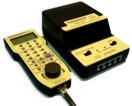 |
||||
| Prodigy Advance Digital System |
||||
| Cased Controllers |
||||
| Panel Mount Controllers |
||||
| Walkabout Controllers |
||||
| Modules & Transformers |
||||
| Scenics & Accessories |
||||
| Wiring & Electrical Components |
||||
| Tiny Signs | ||||
| Tools | ||||
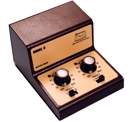 |
||||
| O Scale | Wargaming | Architectural | Narrow Gauge | Tools+ | ||
My Top Five Liveries

IAN FOWLER takes us through his top five liveries.
I'm of a certain age so my choices possibly more reflect a certain time and feeling rather than the aesthetic merit of a colour scheme, so if you are in your late 30s, early 40s you might enjoy this!
5: First Great Western Dynamic Lines
Livery Operated by: First Great Western.
Livery Details: Purple with yellow ends, with pink, white and blue 'dynamic lines', and pink doors.
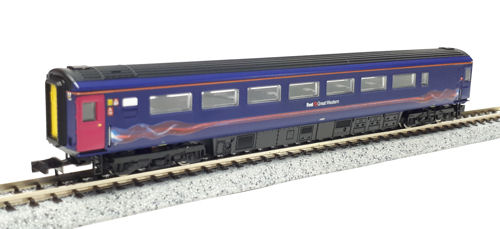
Dapol N Scale coach, in the Dynamic Lines livery.
I'm not sure whether this is about the livery itself or more about the region they operate in, but as a lover of the west country, I am probably more relaxed when in that part of the world so maybe look on the scheme in a disproportionately favourable way. I like the contrast of consistent and simple shade of blue on power cars with the busy dynamic lines on the coaches on HSTs and it seems a practical livery from a cleanliness perspective. It lends itself well to station architecture and signage and suits the brand. It's a shame to see it disappearing as I'm sure many people have had many happy holidays that began on a FGW liveried train.
4: South West Trains Blue
Livery Operated by: South Western Railways.
Livery Details: Blue with red doors with yellow lining. Orange and red 'swooshes' at ends.
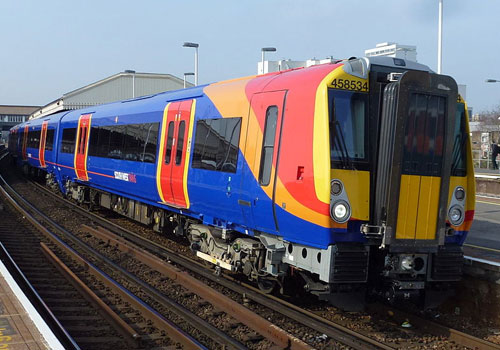
South West Trains Class 458/5 at Clapham Junction.
Operating an intensive service across a wide fleet of trains is a huge challenge, and to apply a consistent and attractive colour scheme across trains, architecture, signage and media is a difficult task but SWT pulled it off admirably. With more than a passing nod to the Stagecoach bus company, there are three main schemes. Predominantly blue (outer suburban as used on 450 desiros), predominantly red (suburban as used on 455s and the like) and predominantly white (express as used on 444s). My favourite is the blue – it really suits the desiro and is gloriously subtle with elegant "swooshes" at either end. LSWR have a difficult act to follow.
3: Network SouthEast (Revised)
Livery Operated by: Network SouthEast.
Livery Details: Blue body with white and red stripes.
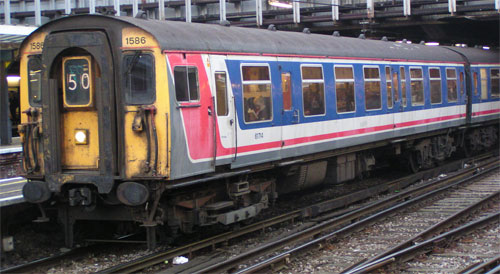
Network SouthEast Class 411 at Victoria.
A massive game changer for me, living in the south east of England and not just about the trains – it was more about the attitude. I remember the grand unveiling at Waterloo where a Class 50 with a rake of Mark 2s and two Class 455s in the new (and radical for the time) scheme rolled into platforms 1 and 2 simultaneously, having been hidden out of sight in Clapham Yard previously. Legendary railwayman Chris Green (often described as the best chairman British Rail never had), somehow turned a dowdy and unloved area of British Rail into a dynamic region full of pride and innovation. The speed at which lampposts turned red, new signage applied and trains repainted was incredible and it made a real difference to users within the newly defined region. The Network days where you could travel anywhere within the network for an astonishingly low sum, wooed new and lapsed travellers back on to the rails – something that just didn't happen under previous regimes. The scheme itself, red white and blue was sometimes referred to as toothpaste-like but its identity was strong and many, many years after its inception, you can still find pockets of NSE on the network if you look hard enough. In fact, a friend and I stumbled across some signage at Marylebone and again later at Old Street. Long live Network SouthEast.
2: Railfreight (Sectorisation)
Livery Operated by: Railfreight.
Livery Details: Bands of grey, with freight-specific pictogram.
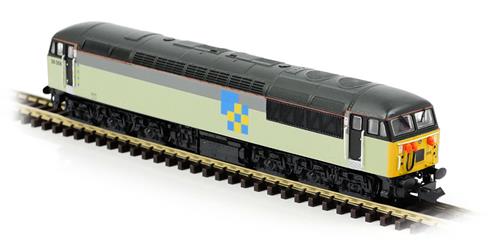
Dapol N Scale Class 56 Construction Sector.
It's fair to say railfreight was on its uppers in the 1990s with its sheer scope difficult to manage. In fact, just in my vicinity, you could observe a single VAA van being tripped from Chichester to Barnham (reverse), then to Fratton where it would be fed into the Speedlink network. Compare and contrast with the Whatley to Ardingly stone train that rumbled past twice a day with its long rake of PGA wagons and you can see the challenges the railway faced. Design agency Roundel were tasked with overhauling the corporate image of this area of British Rail's business after it was restructured and what a fantastically clever job they did. Using a base layer of two greys, every locomotive was allocated to a sector (the type of freight it would usually haul) and to a depot for maintenance. Certainly the latter wasn't new – this had been going on since almost time began but the former certainly was new and the execution of this new "ownership" was genius.
Six large pictograms were created (by hand I hasten to add) using primary colours so they could be easily observed at speed. All symbolised the type of freight they were carrying, and if you take a look at each, you'll spot it. And if you are very perceptive (and I needed it showing to me because I'm not), these pictograms also imply "F" for freight and have a subtle and optimistic arrow within You can see all of these icons in my article about Railfreight Iconography -Ed.
Ownership of the locomotives themselves was normally defined by a simple sticker and a two letter depot code. Within this scheme, each locomotive had a plaque featuring a pictogram relating to a feature of that home depot. For example, Eastleigh had a Spitfire, Stewarts Lane a power station and of course, Stratford had a cockney sparrow! This initiative ensured that depot staff took even more pride in "their" locos and it is fair to say that Roundel took inspiration from the embellishments made by the RAF to their Mustang fighter jets, to demonstrate the strength and confidence of their kit.
As it's not often I get to transition from RAF fighter jets to a humble gronk when writing, I'm going to leave it there!
1: Intercity Swallow
Livery Operated by: Intercity.
Livery Details: Dark grey and white, with red stripe through white.
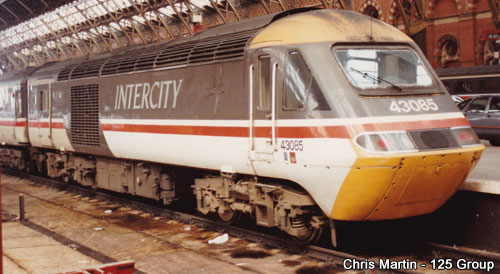
HST in Intercity Swallow livery at St Pancras.
In my opinion, the finest livery to grace the UK scene, Intercity (Swallow) was the finale to a variety of tweaks to a colour scheme that began many years previously. It was launched on 1st May 1987 as part of InterCity's 21st anniversary celebrations. The style and grace of the livery oozed premium experience (at a time when the service itself could sometimes be anything but) and was right up there with any other national high speed network (yes, DB ICE - I am looking at you). Everything about it looked right and the scheme scaled well from the trains themselves through to signage, timetables and even the window stickers they used on Mark 3 coaches. The absolute highlight was the silver, italicised serif upper case font with the swallow replacing the old BR double arrow. I was thrilled to see it live on to this day as I recently observed HST power car 43 185 sporting the scheme which is now referred to as a "retro" livery. This is quite a sobering thought as it feels like only yesterday that I was watching Saturday Summer Specials in this scheme traverse the sea wall in South Devon.
|
We are always looking to make improvements to our website to try and improve the quality of your visit. We would welcome your feedback and suggestions, so please do not hesitate to e-mail our webmaster with your comments. Alternatively call us on 01903 884488.
Home Cookies Privacy Statement Terms & Conditions Site Map Site Guide
WEEE Regulations Glossary Careers & Jobs
Tel – +44 (0) 1903 884488 Fax – +44 (0) 1903 884377 E-Mail us – click here
Gaugemaster.com is a trading name of Gaugemaster Controls Ltd.
Registered in England No. 2714470, Registered office:
Gaugemaster House, Ford Road
Arundel, West Sussex, BN18 0BN, United Kingdom
VAT Reg. No. 587 8089 71
Copyright © 2003-2014 Gaugemaster Controls Ltd. All Rights Reserved.
















